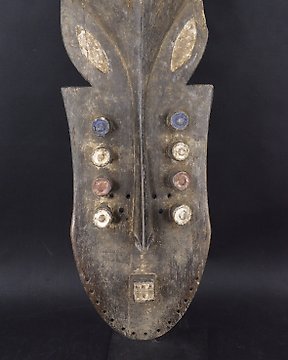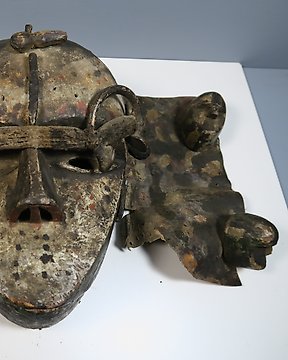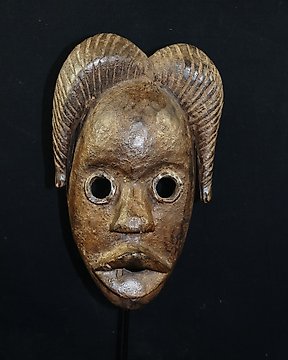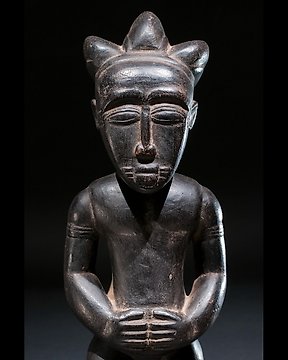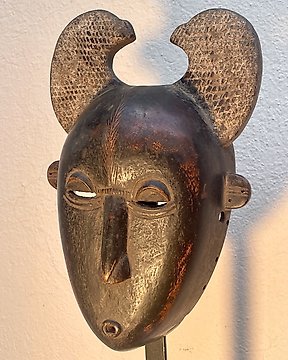large female ancestor statue - Bété. - Côte d'Ivoire
No. 82824917

Dan - Côte d'Ivoire (No Reserve Price)
No. 82824917

Dan - Côte d'Ivoire (No Reserve Price)
A Dan face mask, with upturned chin, mouth and nose, small slit like eyes and a bulbous forehead carved vertically with small diagonal striations, the slightly opened mouth has small holes on it, on the chin is carvings that extend from the cheeks to the head, the head is cvered with a fabric that is completely covered with cowrie shells, sign of use, glossy by use. Certificate of origin and provenance.
“All Dan masks are worn frontally, tied to the head in a vertical position over the face. Horizontally oriented masks worn atop, the head and helmet masks are unknown to the Dan, although both types are found among their neighbors. Dan face masks are nearly always made of wood […] Dan masks have either human or animal features, or sometimes a combination of both […] It is essential to realize that it is not only the face mask but also the headdress which indicates to the Dan observer the nature of the masquerade before him.”
Literature: Eberhard Fischer and Hans Himmelheber, The Arts of the Dan in West Africa, Museum Rietberg Zurich, 1984
“The border between Cote d'Ivoire and Liberia cuts across several ethnic groups, including the Dan, Wee, Kran, and Grebo. In Dan society, dangerous immaterial forest spirits are translated into the forms of human face masks. Whether or not they are worn, such sculptures are spiritually charged. Male performers, gle-zo, experience a dream sent by the mask spirit that allows them to dance it. In performance, the masks are integrated into the hierarchical system that governs political and religious life.
Dan masks have been documented as the embodiment of at least a dozen artistic personalities. Among these are Deangle, who ventures into the village from the initiation camps to ask women for food; Tankagle and Bagle, who entertain through a range of aesthetically pleasing dances, skits, and mimes; Bugle, who historically leads men into battle; and Gunyege, whose mask is worn by a community's champion foot racers in competitions. The present example might be identified as Gunyege; once they are divorced from their performance contexts, however, mask forms are difficult to identify.”
Lit: The MET.
You might also like
- 16+
This object was featured in
How to buy on Catawiki
1. Discover something special
2. Place the top bid
3. Make a secure payment

